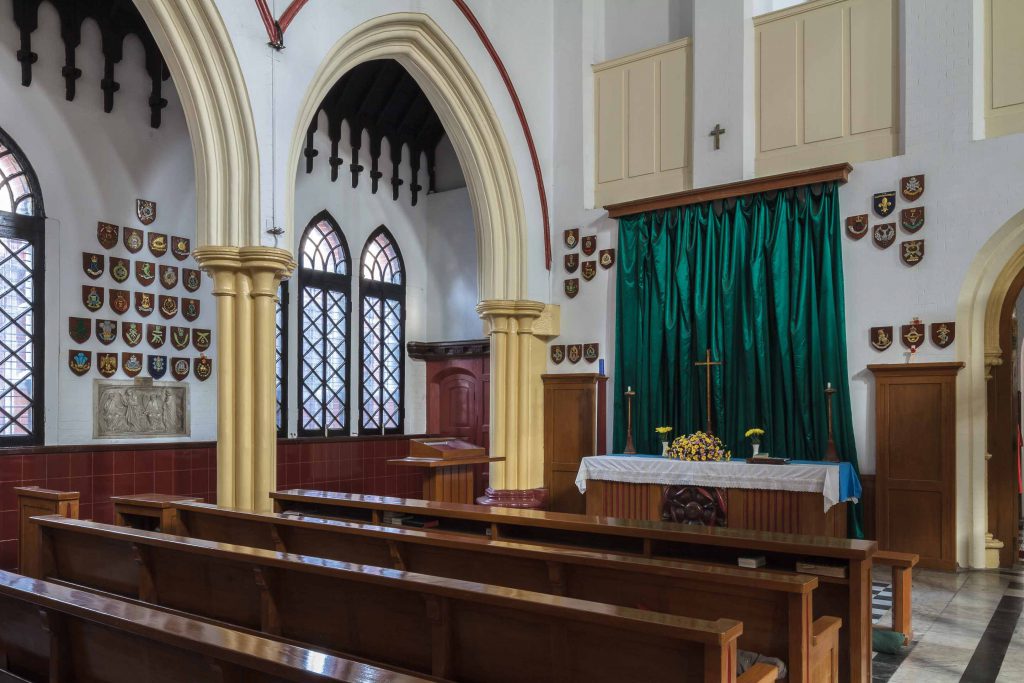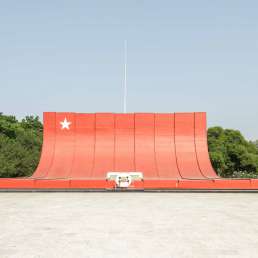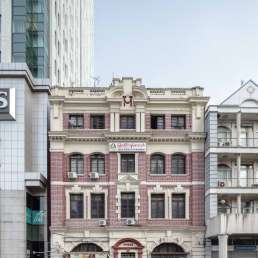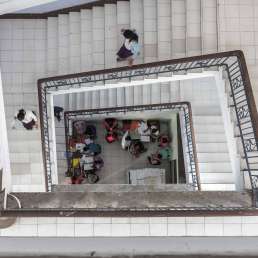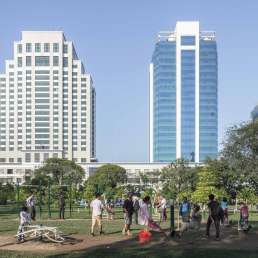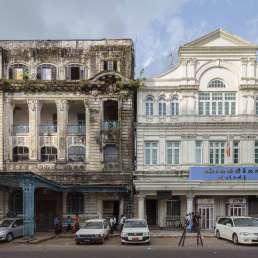Address: 446 Bogyoke Road
Year built: 1886-1895
Architect: Robert Fellowes Chisholm
The Holy Trinity Cathedral is the main Anglican church in Yangon. Its history intertwines with the arrival of the British colonial administration and military. By 1857, only five years after the annexation of Lower Burma by the British, the Church of England accounted for the largest constituency of Christians—far exceeding the numbers of Baptists, Roman Catholics, Orthodox Christians and others. And yet, according to Myanmar history and travel writer Philip Coggan, the number was still only as small as 169, “not counting the soldiers”. The other Christian denominations only had double-digit congregations.
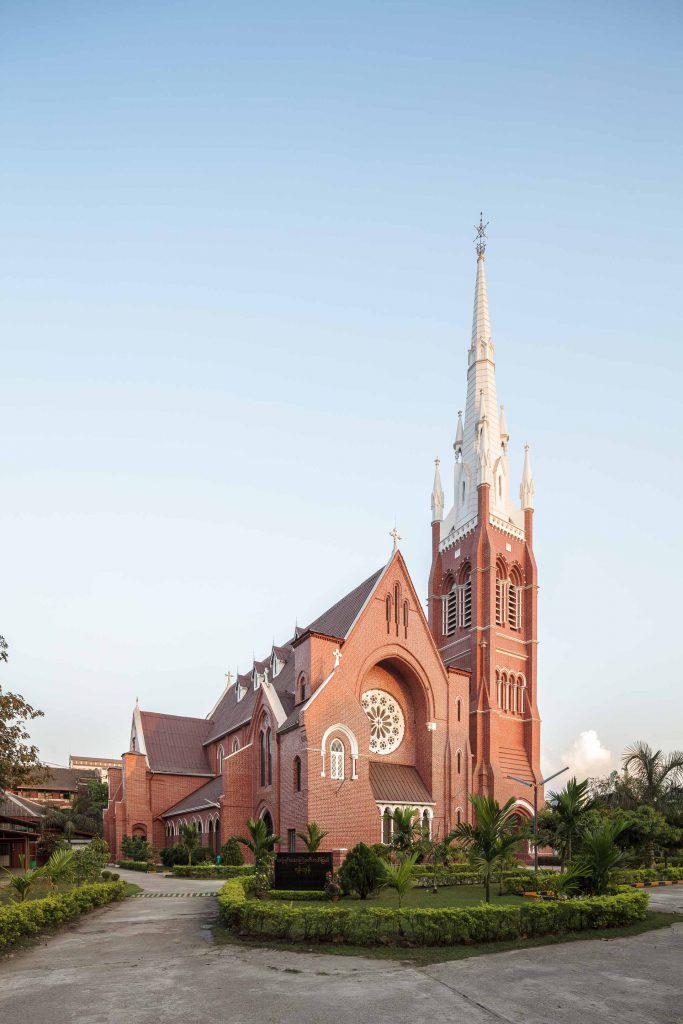
It took a long time for the Anglicans to find a permanent home. For a time they worshipped in barracks. Later they used the Custom House. A Holy Trinity Church was built in 1865, but it was a modest affair. As Coggan writes, it “held no bell, no pulpit, no font, no punkah (fan), no lamps, no organ or other musical instrument, but at least it was there. It had cost 72,000 rupees, of which 10,000 had been raised by public subscription”.
But the number of British—and among them, practising Anglican—officials in Rangoon continued to grow and there was talk of upgrading the facilities to what is today’s cathedral.
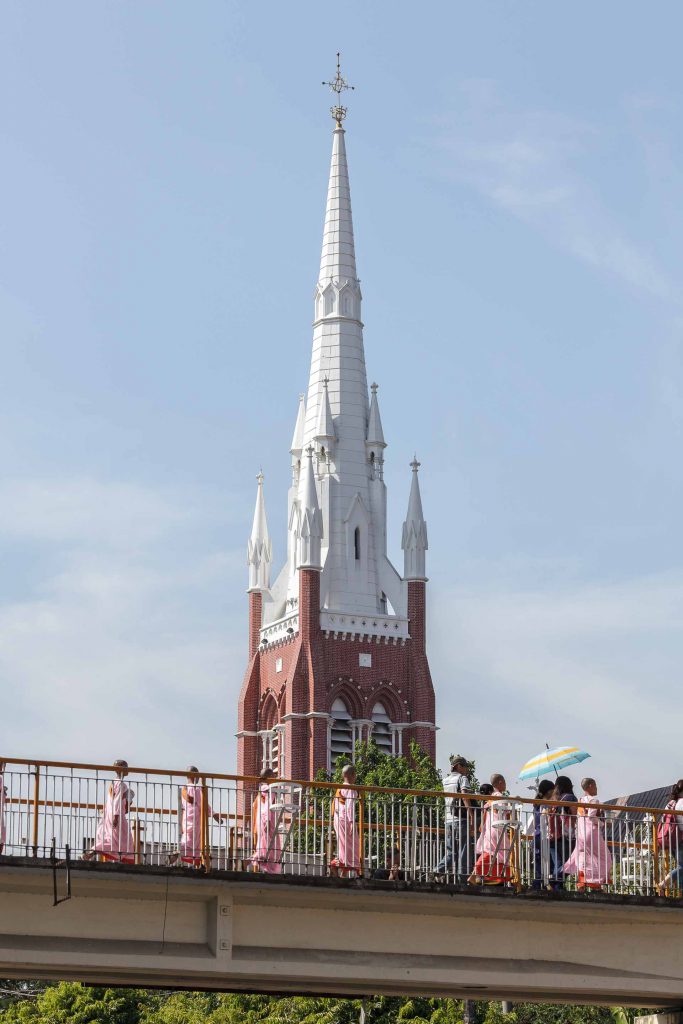
Although work on the redbrick structure began in 1886, it took nine years to get it finished as funds were chronically limited. The church was designed by Madras-based architect Robert Fellowes Chisholm. He was famous for building in Indo-Saracenic style—the merging of European neo-Gothic and neo-Classical styles with Mughal architectural styles.
The cathedral is not part of Chisholm’s forays into Indo-Saracenic experimentation, though: its neo-Gothic leanings wouldn’t look entirely out of place in England. However, you will notice some adaptations to the Burmese climate, including the roofed entrance area underneath the tower, sheltering worshippers from torrential rains.
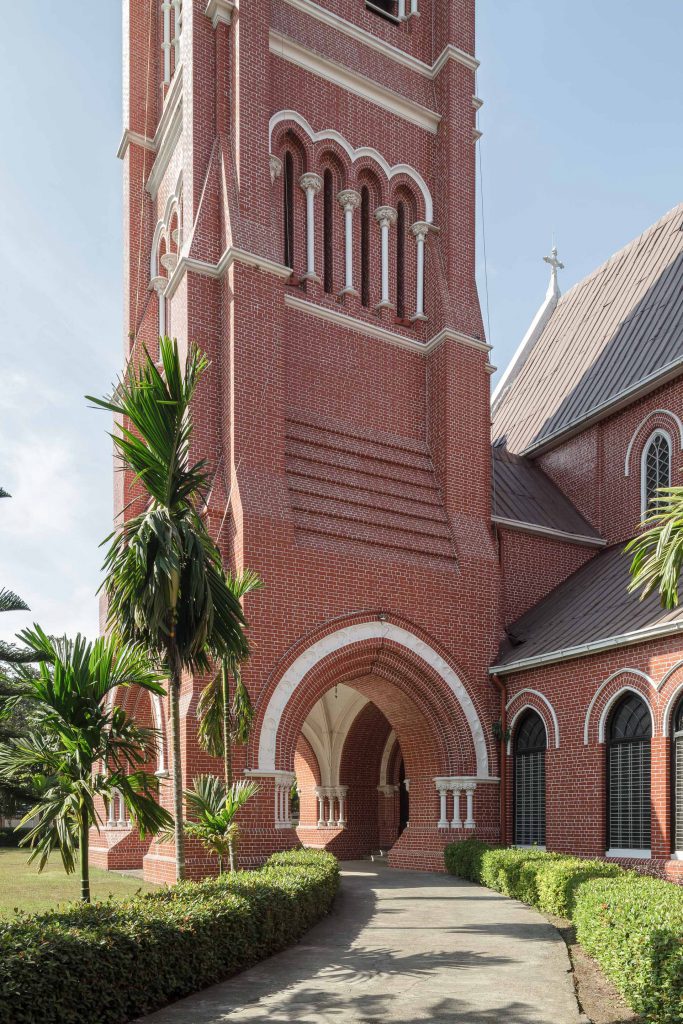
Unusually, the cathedral’s entrance is to the side and not facing the central aisle. As you approach it, you will notice that the red bricks are in fact covered with several layers of thick red paint with the mortar joints painted white. (Amusingly, the pattern around the entrance doesn’t match the actual brick layout at all.)
Inside the cathedral, the pillars are painted an elegant white, cream and burgundy combination, matching the colours of the tiles along the walls and the rows of dark, wooden shuttered doors.
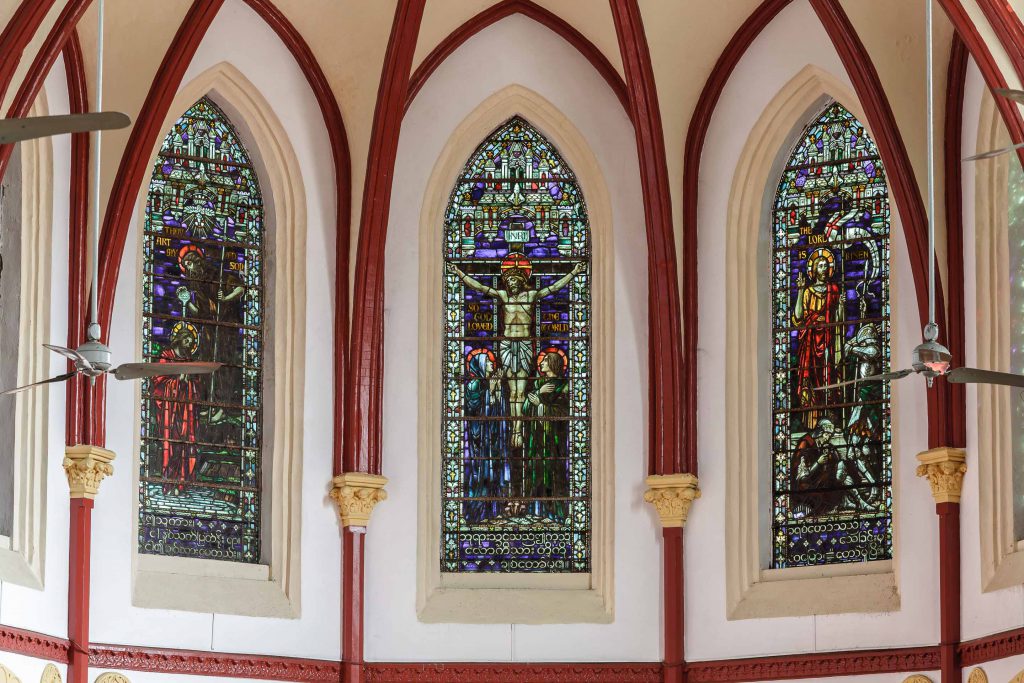
Although the church itself survived the Second World War, the altar and furnishings were destroyed by the Japanese. The current set was installed in 1945 by British military officers. The stained-glass windows on the altar as well as the rose window were renovated in 2003 by a retired British couple.
It is worth exploring the chapel on the left, called “The Forces” chapel, dedicated to the Allied forces who lost their lives in the Burma Campaign of the Second World War. The crests of various regiments who served in the war adorn the walls, as do a few historical notes. One instructs the visitor, perhaps defensively, to “note that besides British, Australian & Commonwealth Forces, the Regular and Auxiliary Burmese Forces are [also] included”. There is also a picture of a regiment of Chindits inaugurating the church’s “Regiments Memorial”. It is found on the church grounds’ southeastern edge. But as you will notice, this monument lists the names of British officers only.
